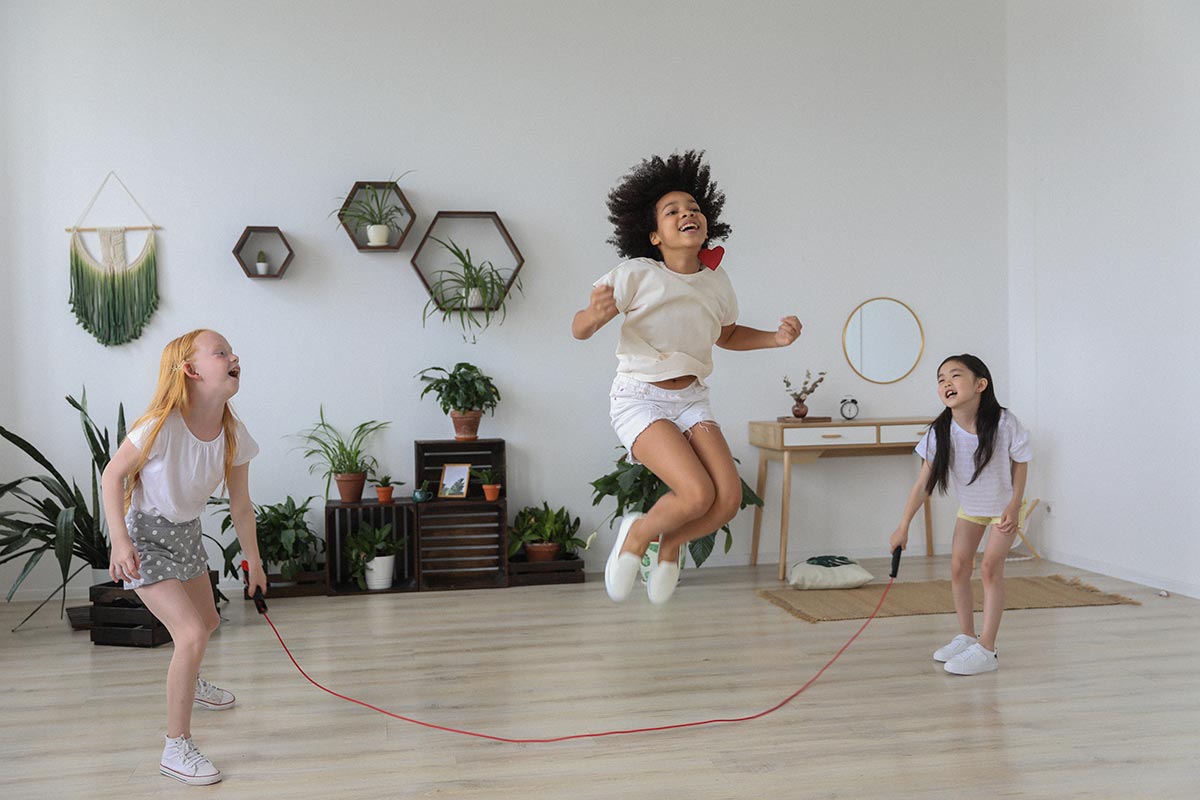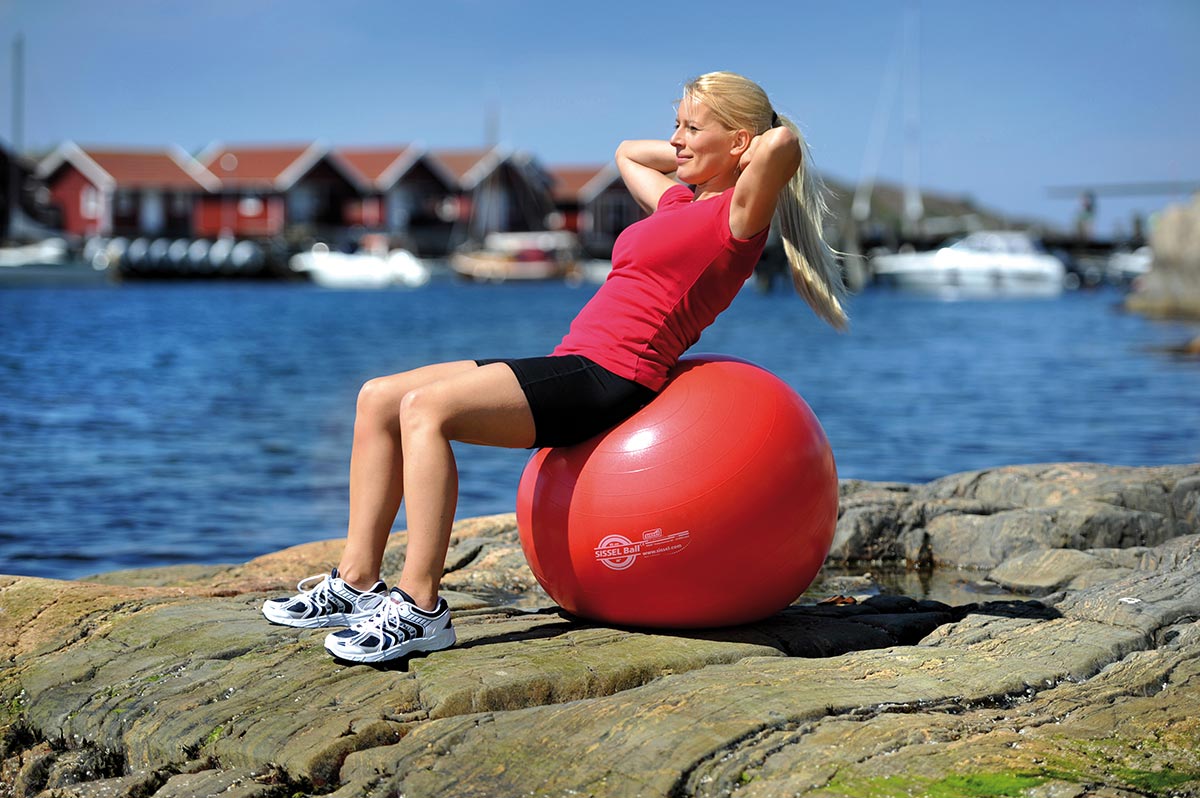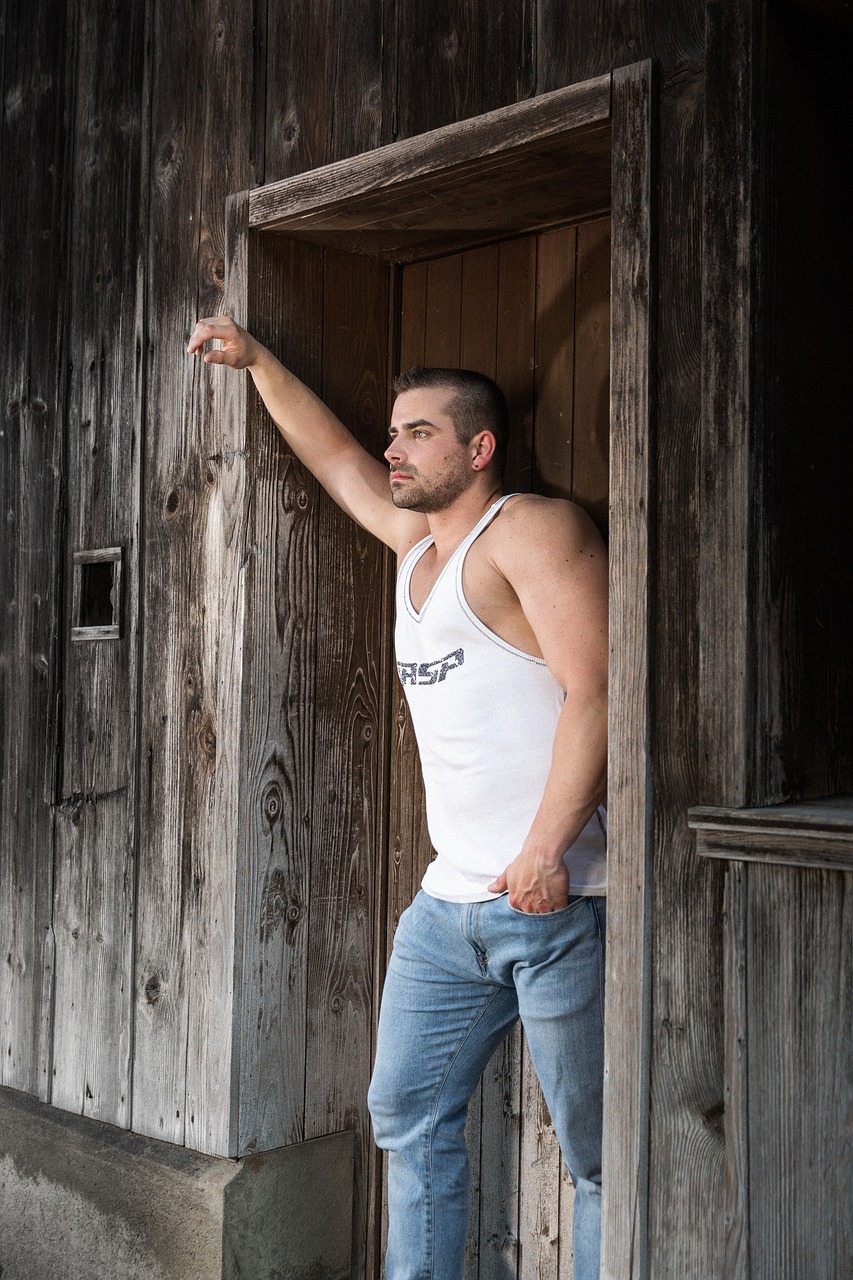Common games and activities such as hopscotch, jumping rope and jumping jacks can be characterized as plyometric exercise. This is because every time the feet make contact with the ground the quadriceps are subjected to the stretch-shortening cycle. Children should simply begin plyometric training with lower intensity drills and gradually progress to higher intensity drills.
Children and adolescents may begin as follows:
- One to three sets of six to ten repetitions on one upper body exercise (e.g., passing a basketball back and forth from close range).
- One lower body exercise (e.g. double leg hop) twice per week.
- Finish with a running butt kick (upper legs remain vertical and movement is from the knees down. Athlete moves forward slowly, by kicking their own butt with their heels).
You can get creative with any exercise that involves using the muscles "explosively" keeping in mind that cushioning is an essential part of the completion of the exercise. The need to cushion will become less as the athlete ages but remain an important part until the body has matured physically.
If multiple sets are performed, participants must be provided with adequate rest and recovery between sets (e.g., two to four minutes) in order to replenish the energy necessary to perform the next series of repetitions with the same intensity. Unlike traditional strength training exercises, plyometric exercises are performed quickly and explosively.
Plyometric exercises may also be introduced into the warm-up period or incorporated into group game activities.
Check out safety precautions for Plyometrics for further reading.













